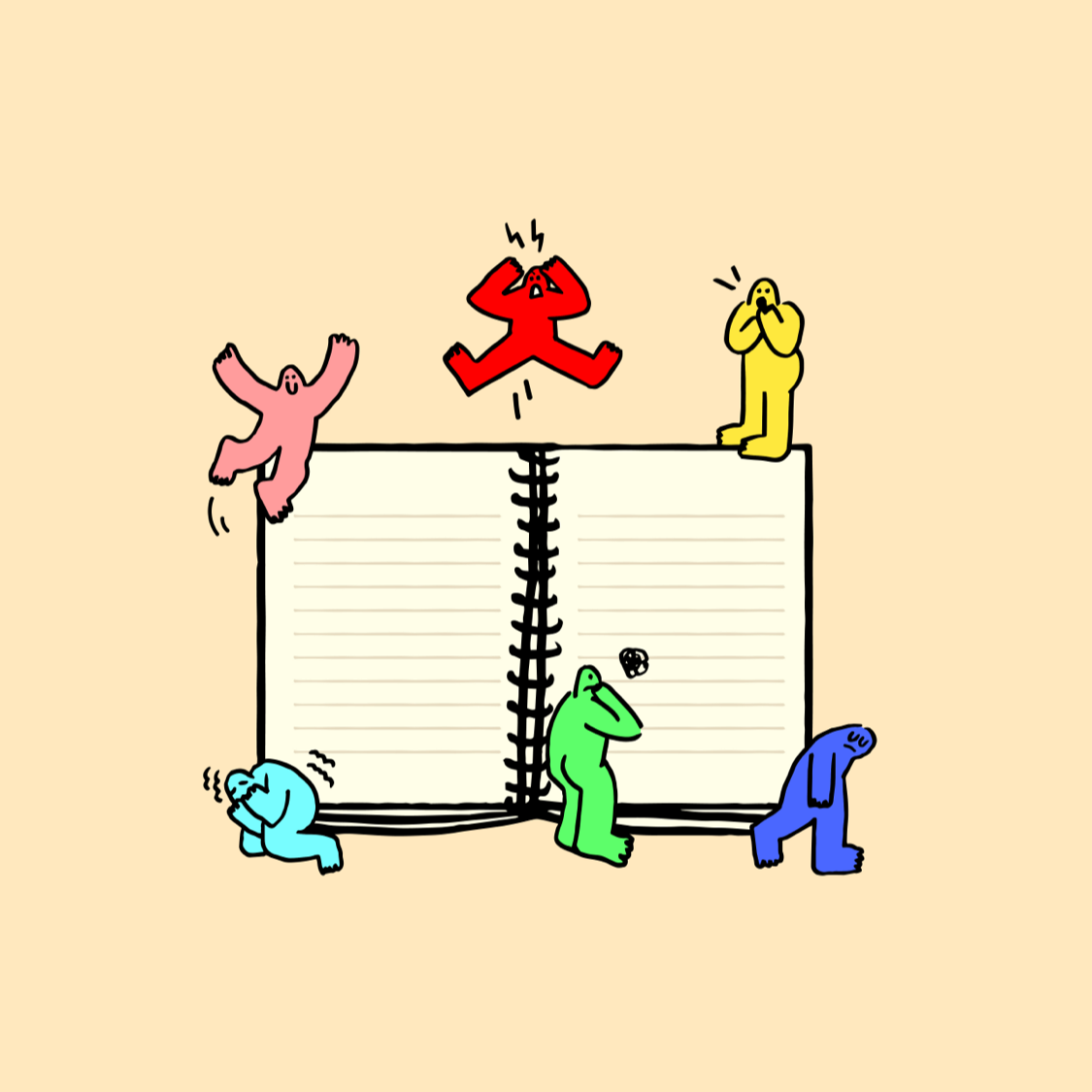Objectives
Emotions aren’t just confined to the spiritual realm. They also exert real influences on the physical world.
Positive emotions such as excitement, emotion, satisfaction, and relaxation can make us feel alive and creative, but negative emotions such as depression, anxiety, and anger can make us withdraw and lead us to failure. The sad reality is that most of us are more easily swayed by negative emotions than by positive ones.
Fortunately for us, we have critical intelligence. Leading psychologists have developed numerous techniques to help us deal with our emotions logically, and to reduce the impact of human trial and error. We’re going to introduce the most simple and traditional, yet at the same time surprising and modern technique developed by professionals.
It is the humble diary, AKA Journaling.
The Art of Understanding and Managing your Emotions
Journaling
Journaling is the act of recording events from our daily life. What we might call a diary can also be journaling. Here, we use the term journaling to emphasize the specific practice of writing down our ideas as they form, with the function of helping us to understand our thoughts and emotions more clearly. It’s not about writing a general record of our everyday activities, but a conscious action with a determined theme and an awareness of goals. Through journaling, we can reflect on our emotions and find appropriate countermeasures.
Why do we Need Self-Reflection?
Self-reflective journalism starts not from external events, but from focusing our attention on the thoughts and emotions that arise internally. Many professionals advocate recording and tracking your emotions through journaling to help better manage them.
If you find yourself in one of these situations, you need to start journaling.
✅ You find yourself feeling sad or angry for no reason
✅ You easily feel overwhelmed with anxiety or loneliness
✅ You feel like you’re being dragged around by your emotions
✅ You want to reduce your negative thoughts, and feel more positive
Self reflective journaling can solve these issues in the following ways.
✅ Identifying the patterns and trends that dictate your emotions.
→ If you can identify the pattern
It becomes possible to predict and prepare in advance for emotions that are likely to occur.
→ If you can prepare for emotions in advance
You can reduce the negative impacts of the emotions.
✅ Finding the cause of your emotions, and exploring improved methods of coping.
→ If you can eliminate the cause
You can cut off negative emotions.
→ If you can’t eliminate the cause
You can use the time and energy that you spent being swayed by your emotions more meaningfully. You can focus on avoiding the source of your uncontrollable emotions, or by seeking an approach that limits it’s effect on you.
✏️ Self Reflection : Preparation
You don’t need to prepare much. Just a pencil and some paper is enough. Of course, it’s the 21st century and more effective tools have been developed. You can record your emotions using emoji’s in the “A Room of One’s Own” diary feature. You can quickly recognize the patterns of your emotions through visual cues.
Good Facts to Know Before Getting Started
- Your brain creates your emotions using your thoughts. - You don't control all of your thoughts. Some occur automatically, like a conditioned reflex. - Some of the automatically generated thoughts become the seeds of bad feelings. - There may be errors in your automatically generated thoughts. - Maybe your thoughts aren't yours. Your brain could be confused by the situation, events, people, and society where you are trapped.
✏️ Self Reflection : Practice
Now, let’s observe and analyze our emotions in three evidence-based stages.
✔️ First Stage. Identify your Emotions
What’s going on?
What emotions are you feeling?
"I am _😡 😢 😨 😁 😲 😖_ "

*TIP*
Many psychologists divide human emotions into six basic categories.
😡 😢
Anger, Sadness
😨 😁
Fear, Joy
😳 😖
Surprise, Disgust(or Shame)
If you notice regularly occurring negative emotions,
Move on to the next stage to analyze it more deeply.
✔️ Second Stage. Find the Cause
What are the thoughts that are leading to these emotions?
What thoughts or beliefs underpin them?
"The reason I feel like this is ______ "

✔️ Third Stage. Respond to Emotions
Is there any logical error in the thoughts causing this emotion?
What would it seem like from someone else’s point of view?
"The thoughts I just had might not be logical. Because ________"

*TIP*
Error traps that people are most likely to fall into.
There’s a good chance these thoughts are unreasonable, and could be triggering false emotions.
"Should" Trap - "I should do this", "I should have done that"
"Mind Reader” Trap - "They hate me. I could see it in their eyes."
"Pessimist" Trap - "I ruin everything. I’ll ruin things this time too. And the next time..."
"Microscope" Trap - "My strength is... uh... I mean I can list 8765528 weaknesses..."
"Rule of Nature" Trap - "What if it rains tomorrow? Worrying won’t change anything but… still… what if it rains?”
"All or Nothing" Trap - "You either love it or you hate it. There’s no middle ground"
"Self-Critical" Trap - "I’m stupid"
"Overly-Critical" Trap - "Everyone except me is stupid"
If you’ve found an error in your thoughts,
and have gained insight into their cause, next seek countermeasures.
If the same situation happens again, how will you deal with it?
"If something similar happens again I will _______ "

✏️ Journaling? Are you ready? If you are then let’s get started!
Summary
- You can observe and track your emotions through journaling
- You can reduce negative emotions through self reflection
- Try out self-reflective journaling in ‘A Room of One’s Own’ Diary
